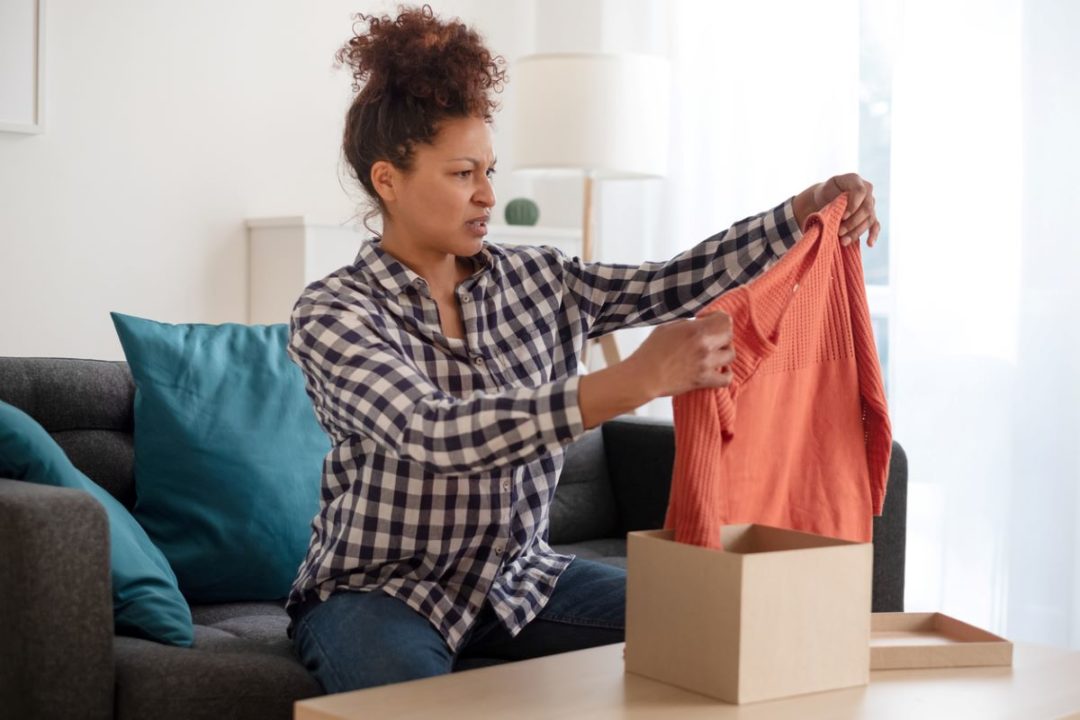
Photo: iStock.com/tommaso79
What E-Commerce Is Teaching Us About Returns
Retailers quickly learned that e-commerce sales generate a higher proportion of returns than in-store shopping. Depending on the sector, the figure is somewhere north of 20%, according to figures from the National Retail Federation, compared to below 10% for in-person purchases, and it's rising. That makes sense, especially when you consider apparel purchased online — which attracts a return rate closer to 30%. Look and feel count for a lot, and user-experience technology is not yet capable of allowing consumers to know for sure in advance whether the shoe will actually fit.
But there’s another critical point that seems to have eluded many retailers when it comes to returns. It’s this: Because the process of assessing and rejecting items and then being satisfied with your choice happens at home, part of the pleasure of online shopping happens there and then too. But most e-tailers behave as if the highlight of the experience happens when you hit “place order.” It doesn't.
“The moment of magic in e-commerce is when the product turns up, and retailers aren’t paying enough attention to that,” says Itamar Zur, co-founder and chief executive officer of the shipping platform Veho. As a consequence, many retailers are focusing on returns, but they’re not treating them as a critical piece of the customer satisfaction and retention puzzle. They tend to behave as if these returns are more or less the same as traditional returns, just at greater volume (and correspondingly greater cost).
As we come out of the pandemic-driven e-commerce boom, it’s clear that retailers are attempting to increase consumer pain in order to minimize their own. Major retailers are shortening their refund and exchange windows, and charging restocking fees. Even that icon of “you can return anything, anytime,” LL Bean, earlier this year rescinded that policy and now charges return fees, as well.
Zur says that, while it’s understandable to focus entirely on minimizing the number and cost of returns, there’s an opportunity to gain a competitive edge lurking in this loathed part of the business. In short, punishing customers in order to optimize short-term economics comes at the expense of longer term brand loyalty, and even risks lowering the initial conversion rate, he says.
“Customers’ expectations are not declining,” he observes. “They expect to do the same things they can do in a physical store, or better.” Retailers should offer an online shopping system that's designed around customers’ needs, and use smart returns protocols to enhance and evolve the brand offering, and even shape consumer behavior in a positive way, rather than provide a sting in the tail.
Zur brushes aside the argument that Amazon.com has engendered an attitude to returns that other retailers can scant afford. “Amazon didn’t create the desire to see things improve over time, just as Apple didn’t create the need to communicate,” he says, pointing out that Amazon wasn’t the first to create free returns; it was Zappos (which is now owned by Amazon.) “They said: Let’s make returns, instead of a cost center, a profit center, because customers will buy more,” he says. “If I know I can return something that doesn’t fit me, it increases the likelihood that I’ll order in the first place, and I develop loyalty toward the brand.”
Zur says Amazon has taken that concept and expanded it. “The number-one logistics fallacy about Amazon, that it’s all about same-day or next-day delivery, misses the bigger picture,” Zur says. “Amazon is creating extra layers of logistics because it creates customer loyalty.”
It may be a tough time to deliver this message, as we stare down the barrel of a recession. “It’s affecting how e-commerce companies are thinking about where they want to spend and save money,” says Zur. “But I think there’s some short-sightedness in scaling back on customer-favorable practices.” All the same, he sympathizes. Long term thinking is always better, he says, but not at the expense of short-term viability.
Zur’s company, Veho, allows retailers to offer a returns process that involves no printing of returns labels (or wastefully including a return label with every shipment). It relies on a network of independent crowdsourced drivers to make deliveries and pick up returns. A consumer can just leave an item on their doorstep, or with a doorman, and use an online app to upload the information Veho needs to pick it up and get it back to the retailer.
Fundamentally, Zur wants e-tailers to reframe how they think about the returns side of the business. “The question is: How do brands calculate the actual ROI on returns? They tend to look at it in a silo, rather than what is the overall ROI in general,” he says. When a customer sees that making a return will likely be difficult, that almost certainly impacts the conversion rate on a retailer’s website. And a bad returns experience is for sure going to influence whether that customer makes another purchase.
“When one takes all those things into account, a very different picture emerges," says Zur. "And it’s different for every brand. I’m not advocating for free returns per se. This has to be a win-win. But you need to assess the whole process.”
Lastly, a customer-centric, easy returns process can get goods back on the DC shelves faster — something that’s particularly attractive in retail verticals where time is of the essence, such as fast fashion or home electronics. By making it easier to return items, brands can significantly improve turnaround from a customer receiving an item to returning it.
“You prevent delays in returns coming back for resale,” Zur points out. “You’re essentially asking the customer to make a decision faster. It’s a great example of how making it a better experience for the customer benefits the brand.”
